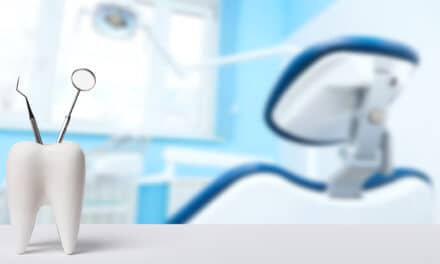ADA President Daniel Klemmedson, DDS, MD, says it’s critical to identify people carrying the COVID-19 virus to minimize their contacting and potentially infecting others.
According to a new policy from the American Dental Association (ADA), point of care testing to screen patients for chronic diseases and other medical conditions, including COVID-19, that could complicate dental care or put the patient and dental staff at risk is within a dental practitioner’s scope of practice.
“Yet currently, rapid and reliable COVID-19 tests are not available to dental providers for in-office use, which makes no sense,” said ADA president Daniel Klemmedson, DDS, MD.
Klemmedson, who holds degrees in both dentistry and medicine, pointed out that dental providers are doctors of oral health. “It is well within dental providers’ scope of practice to screen not just for COVID-19 infection but also other medical conditions that may affect dental care such as glucose levels, which help screen for diabetes, and blood pressure, which help screen for hypertension. Patients with abnormal test results would be referred to a physician, other qualified medical professional, or medical facility for diagnosis and follow-up care.”
“With strengthened infection prevention protocols and personal protective equipment (PPE), dental offices have re-opened safely around the country,” Klemmedson said. “Millions of patients have returned for oral health care, which is an essential health service. Dental practitioners should be given access to FDA-authorized point-of-care testing for COVID-19 infection to add to their ability to screen patients and help to identify those infected with the virus.”
Klemmedson pointed out that dental providers’ areas of care include not only their patients’ teeth, gums and supporting bone but also the muscles of the head, neck and jaw, the tongue, salivary glands, the nervous system of the head and neck and other areas. When appropriate, dental practitioners perform procedures such as biopsies, and screen for chronic or infectious diseases, salivary gland function and oral cancer.
In addition, the ADA referred to 2013-2016 data from the U.S. Centers for Disease Control and Prevention (CDC), which states that 7.7% of people (10.2 million) reported having seen a dental provider in the previous 12 months but no other medical professional.
“It makes practical sense for COVID-19 point of care testing to be included in screening procedures dental providers perform,” Klemmedson said.
The U.S. Food and Drug Administration (FDA) includes dental practitioners among those professionals who can test for COVID-19. In addition, the CDC recommends dental facilities consider implementing pre-procedure testing for COVID-19, particularly during PPE shortages.
The ADA and state dental societies are actively advocating state and federal regulatory authorities to publicly recognize that point-of-care testing for COVID-19 is within dental practitioners’ existing scope of practice, and make COVID-19 tests available for use in dental practices
“With dental practices reopened across the country, dental professionals are already screening patients for signs and symptoms of COVID-19, and referring patients for appropriate medical follow-up when indicated,” Klemmedson said. “Unfortunately, such screening alone will not identify all individuals who are infected. Identifying infected patients is key to being able to protect both patients and dental team members from exposure to the virus.”
Given that patients receiving dental treatment may be pre-symptomatic (infected but will develop symptoms in the next 14 days) or asymptomatic (infected but will never exhibit signs or symptoms of disease), Klemmedson said it is critical to identify those individuals carrying the virus so that it is possible to minimize their contacting and potentially infecting others.










